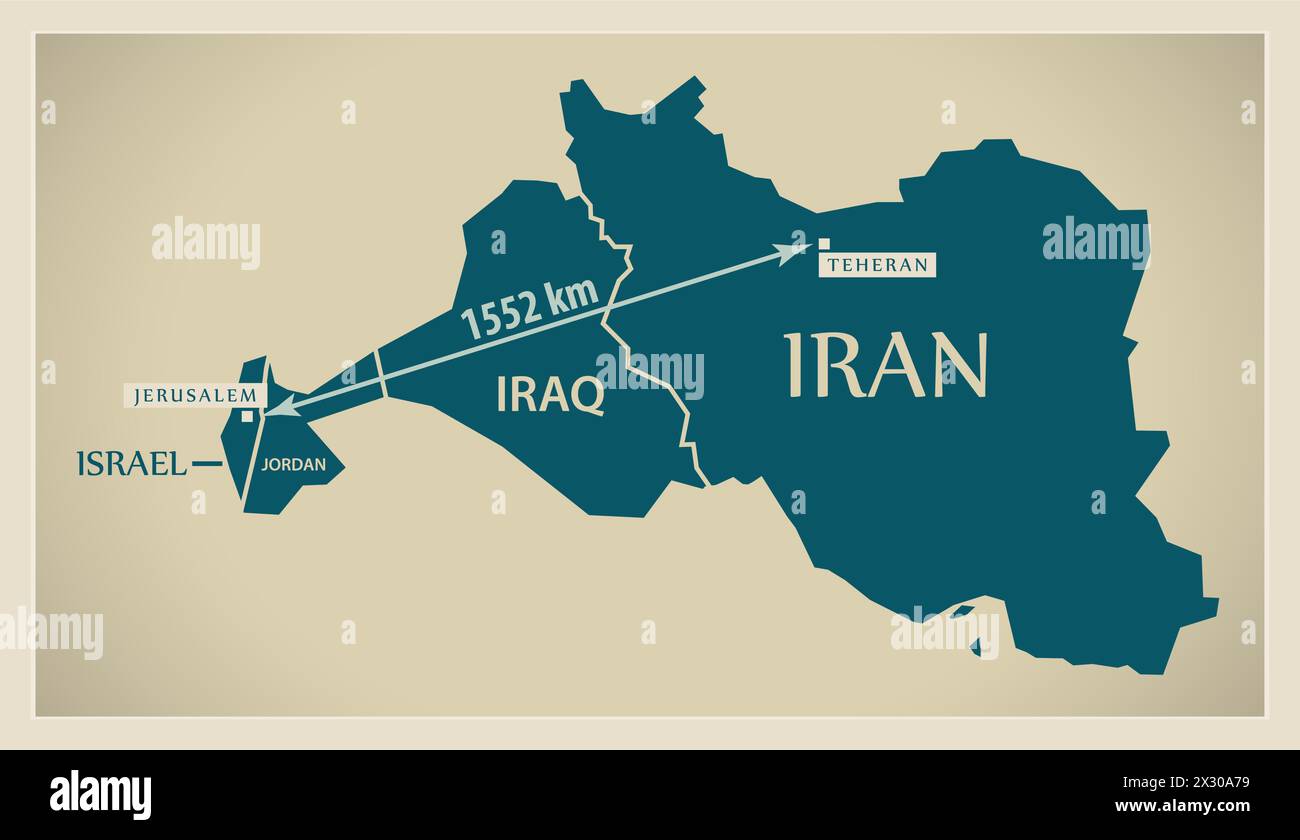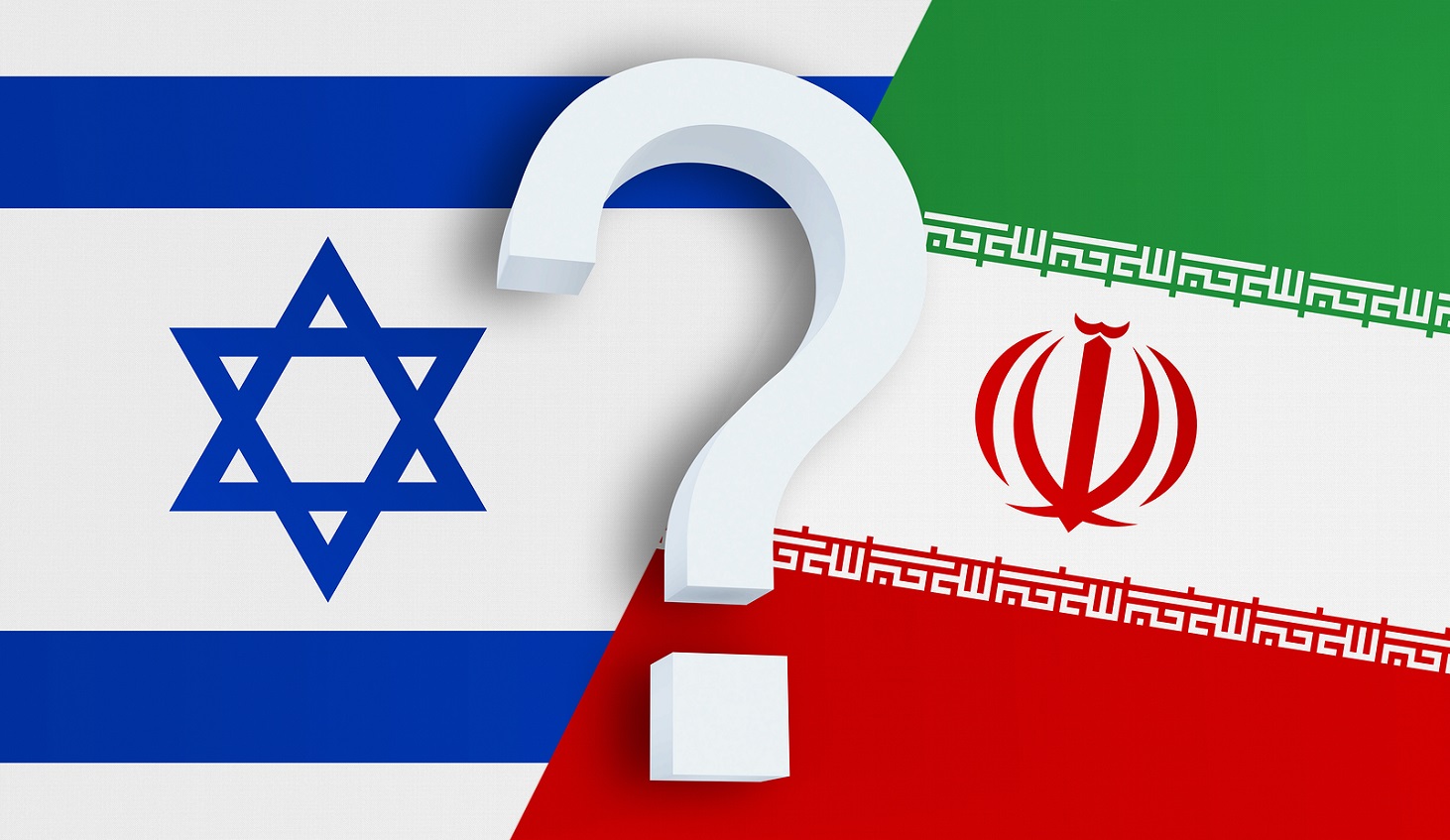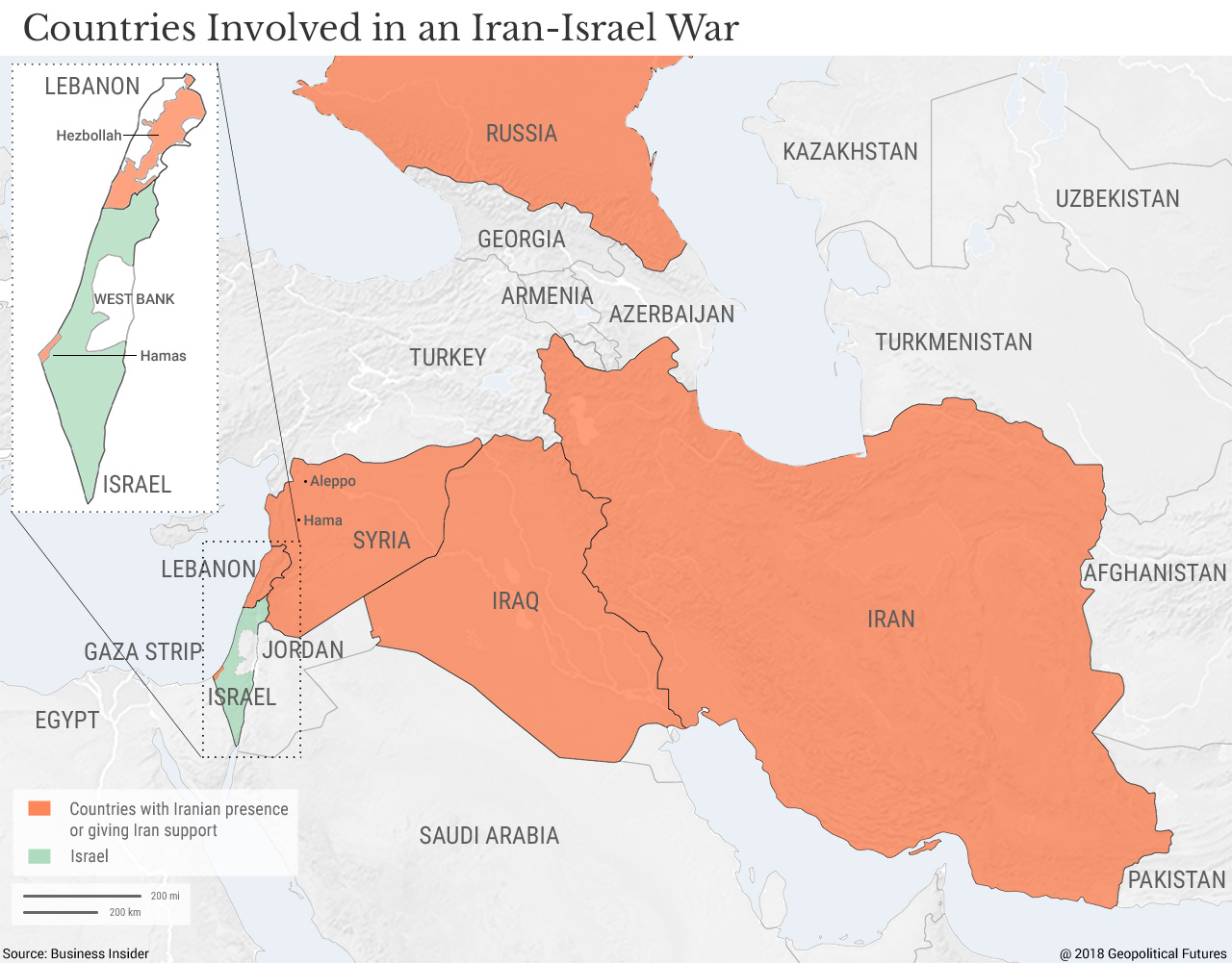Unveiling The Kilometers: The True Distance Between Israel And Iran
In an increasingly interconnected yet often fragmented world, understanding the fundamental geographic realities between nations is crucial. One such reality, frequently discussed in geopolitical circles, is the distance between Israel and Iran in kilometers. While headlines often focus on political rhetoric and strategic tensions, the actual physical separation between these two significant Middle Eastern powers plays a pivotal role in shaping regional dynamics, military strategies, and diplomatic considerations. This article delves into the precise kilometric measurements, explores why this distance matters, and examines the tools used to ascertain such vital geographical data.
Beyond the political narratives, the raw numbers of geographical separation provide an objective lens through which to view complex relationships. Knowing the exact distance between Israel and Iran in kilometers helps us grasp the logistical challenges, the potential reach of various assets, and the strategic importance of intervening territories. It’s a foundational piece of information that informs everything from defense planning to international diplomacy, offering a clearer picture of the intricate tapestry that is the Middle East.
Table of Contents
- The Geographic Reality: Understanding the Distance Between Israel and Iran in Kilometers
- Why Does This Distance Matter? Geopolitical Implications
- Tools for Measuring Global Distances: How We Know
- Historical Context and Regional Proximity
- The Role of Neighboring Countries in the Equation
- Strategic Considerations and Military Reach
- Beyond the Map: Cultural and Diplomatic Distances
- The Future of the Distance Between Israel and Iran in Kilometers
The Geographic Reality: Understanding the Distance Between Israel and Iran in Kilometers
When discussing the distance between Israel and Iran in kilometers, it’s essential to distinguish between different types of measurements. The most straightforward is the "as the crow flies" or direct air distance, which represents the shortest possible line between two points on the Earth's surface. This measurement is crucial for understanding the theoretical reach of aerial assets like aircraft or missiles.
- Exploring The Fascinating World Of Yololary Spiderman
- Masahub New
- Kassidie Kosa
- Cela Lopes Pelada
- Billie Elish
Direct Air Distance: The Shortest Path
For the direct air distance, which is often the figure cited in strategic analyses, the separation is considerable. According to various geographical tools and online distance calculators, the approximate direct air distance from major cities in Israel (like Tel Aviv or Jerusalem) to key locations in Iran (such as Tehran) is roughly 1,600 to 1,800 kilometers (approximately 994 to 1,118 miles). For instance, if you were to use a worldwide distance calculator with an air line function, like the ones that show the distance in kilometers between "Tehran and Israel," this is the range you would typically find. This measurement assumes a straight line over intervening territories, which include countries like Jordan, Iraq, and potentially Syria.
Overland Routes: A Complex Journey
While air distance provides a baseline, overland routes present a far more complex picture. There is no direct land border between Israel and Iran. Any land journey would necessitate traversing multiple countries, each with its own political landscape, border controls, and infrastructure challenges. The actual driving distance would be significantly longer, potentially exceeding 2,500 to 3,000 kilometers, depending on the specific start and end points and the chosen route through neighboring states. This complexity underscores that the distance between Israel and Iran in kilometers is not merely a number but a multifaceted geographical reality.
Why Does This Distance Matter? Geopolitical Implications
The kilometric separation between Israel and Iran carries profound geopolitical implications. This distance influences military planning, strategic deterrence, and the very nature of potential conflict. It dictates the type of military assets required for any direct engagement, the logistical challenges involved, and the timeframes for operations.
- Is Jasmine Crockett Married With Children
- Lee Jong Suk And Iu Are Confirmed Married
- Sophie Rain Only Fans Leak
- Pining For Kim By Tailblazer
- Is Michele Lamy Aatanist
For Israel, the distance means that any direct military action against Iran's nuclear facilities or other strategic targets would require long-range capabilities, aerial refueling, and potentially overflight permissions from other nations. This adds layers of complexity and risk to any such endeavor. Conversely, for Iran, the distance impacts the reach of its missile programs and its ability to project conventional power directly towards Israel. The necessity of long-range capabilities on both sides elevates the stakes and contributes to a regional arms race focused on advanced weaponry.
Moreover, the geographical gap encourages the use of proxies and asymmetric warfare. Instead of direct confrontation across vast distances, both nations have historically supported non-state actors or allied governments in closer proximity to their adversary. This strategy allows them to exert influence and challenge their rival without necessarily engaging in direct, large-scale conventional warfare that would be logistically challenging due to the significant distance between Israel and Iran in kilometers.
Tools for Measuring Global Distances: How We Know
In today's digital age, determining the distance between any two points on Earth is remarkably simple, thanks to sophisticated online tools. These platforms leverage advanced mapping technologies and geographical data to provide accurate measurements, whether for travel planning or strategic analysis. The "Data Kalimat" provided emphasize the utility of such tools.
The Power of Online Distance Calculators
Online distance calculators, such as `distance.to`, have revolutionized how we perceive global geography. As the provided snippets indicate, "With the distance calculator `distance.to`, you can easily determine the distance in kilometers between places all over the world." It's a straightforward process: "Simply enter any desired location into the search function and you will get the shortest" distance. These tools are not limited to just air distances; they often provide a "route planner, interactive maps," and even "travel duration and flight distances." For example, you can easily input "Tehran and Israel" to see the direct air distance displayed on an interactive map, similar to how it "shows the distance in kilometres between Paris and Amsterdam."
These calculators utilize geodesic algorithms to compute the shortest distance along the surface of a sphere or ellipsoid (approximating the Earth's shape), providing highly accurate "air line" measurements. For road distances, they integrate with extensive road network data, considering various routes and terrain to provide practical travel estimates. This accessibility means that anyone can quickly ascertain the approximate distance between Israel and Iran in kilometers, offering a baseline for understanding the geographical challenges.
Beyond Simple Kilometers: Factors Influencing Travel
While online calculators provide the raw kilometric data, the actual "travel distance" between Israel and Iran is influenced by a myriad of factors beyond just the number of kilometers. These include:
- Airspace Restrictions: Political tensions often lead to closed airspaces or no-fly zones, forcing aircraft to take longer, circuitous routes.
- Geographical Barriers: Mountain ranges, deserts, and bodies of water (like the Persian Gulf or Red Sea) can complicate direct travel and necessitate detours.
- Political Borders: The presence of multiple national borders between Israel and Iran means that any overland travel is subject to complex international relations and visa requirements.
- Infrastructure: The quality and availability of roads, airports, and other transport infrastructure in intervening countries can significantly affect travel time and feasibility.
Historical Context and Regional Proximity
Historically, the distance between the geographical regions now known as Israel and Iran has always been a significant factor in their interactions. While both are ancient civilizations, direct, sustained contact was often mediated by the empires and peoples situated between them. From the Persian Achaemenid Empire's interactions with ancient Judea to the later Islamic caliphates and Ottoman rule, the intervening lands have served as both a bridge and a barrier.
In modern times, despite the significant kilometric separation, the two nations have found themselves increasingly intertwined in regional power dynamics. The "proximity" in a geopolitical sense has often overshadowed the physical distance. This is largely due to the development of long-range military capabilities and the interconnectedness of global communication and finance, which allow influence to be projected far beyond immediate borders. The perception of a shared neighborhood, despite the actual distance between Israel and Iran in kilometers, fuels much of the regional tension.
The Role of Neighboring Countries in the Equation
The countries situated between Israel and Iran – primarily Jordan, Iraq, and Syria – play an indispensable role in defining the effective distance and strategic landscape. Their territories are the airspace that would need to be traversed for direct aerial engagement, and their political alignment (or lack thereof) profoundly impacts regional stability.
Iraq, in particular, forms a large geographical buffer. Its stability or instability directly affects the potential for either nation to project power or influence across the region. Syria's role as a conduit for Iranian influence to Lebanon (Hezbollah) and its shared border with Israel also transforms the simple kilometric distance into a complex web of strategic considerations. These intervening states are not merely empty spaces on a map; they are sovereign nations with their own interests, alliances, and vulnerabilities, all of which contribute to the real-world implications of the distance between Israel and Iran in kilometers.
Strategic Considerations and Military Reach
The kilometric distance is a fundamental parameter in military strategy. For Israel, projecting power over 1,600 to 1,800 kilometers requires advanced fighter jets with aerial refueling capabilities, or ballistic missiles with sufficient range. The logistics of such operations are immense, involving careful planning for ingress, egress, target acquisition, and potential enemy air defenses. The further the target, the greater the fuel requirements, the longer the exposure to threats, and the more complex the mission planning becomes.
For Iran, its ballistic missile program is largely seen as a means to overcome this geographical separation. Missiles, unlike manned aircraft, do not require overflight permissions and can traverse the distance relatively quickly. The range of Iran's various missile systems is a direct reflection of its strategic imperative to reach targets at this specific distance between Israel and Iran in kilometers. Both nations continuously invest in capabilities designed to either bridge or defend against this geographical gap, underscoring its critical importance in their respective defense doctrines.
Beyond the Map: Cultural and Diplomatic Distances
While the physical distance between Israel and Iran in kilometers is a fixed geographical fact, the "distance" between them in terms of cultural understanding, diplomatic relations, and political ideologies is arguably far greater and more complex. Decades of animosity, ideological clashes, and proxy conflicts have created a vast chasm that extends far beyond mere kilometers.
Despite a shared ancient history and some cultural touchpoints, modern political narratives have fostered deep mistrust and antagonism. This "diplomatic distance" means there are virtually no direct channels of communication, no cultural exchange programs, and no diplomatic missions. This lack of direct engagement makes de-escalation difficult and misunderstanding common, turning the physical distance into an even greater barrier to peaceful coexistence. Understanding this multifaceted "distance" is crucial for any comprehensive analysis of their relationship.
The Future of the Distance Between Israel and Iran in Kilometers
The physical distance between Israel and Iran in kilometers will, of course, remain constant. However, its strategic significance is dynamic, constantly evolving with technological advancements and shifting geopolitical alliances. As missile technology improves, as drone capabilities expand, and as cyber warfare becomes more prevalent, the traditional understanding of geographical barriers may begin to blur.
Furthermore, any future changes in the political landscape of intervening countries could drastically alter the strategic implications of this distance. A more stable Iraq, for instance, could potentially facilitate different forms of regional engagement, while increased instability could exacerbate security concerns. The future of the relationship between Israel and Iran, therefore, will not only be shaped by their respective internal developments but also by how they navigate the unchanging geographical reality and the ever-changing political dynamics of the region that lies between them.
Conclusion
The distance between Israel and Iran in kilometers, approximately 1,600 to 1,800 kilometers by air, is a fundamental geographical fact that underpins much of the strategic thinking in the Middle East. While easily ascertainable using modern tools like `distance.to`, this number is far more than just a measurement. It dictates military capabilities, influences diplomatic strategies, and highlights the crucial role of intervening nations.
Understanding this physical separation is essential for grasping the complexities of regional security, but it is equally important to recognize the profound cultural and political distances that also exist. As technology continues to evolve and geopolitical alignments shift, the strategic implications of this kilometric gap will undoubtedly continue to be a central theme in the ongoing narrative of the Middle East. We encourage you to explore these geographical realities further using online mapping tools and to delve deeper into the historical and political contexts that shape this critical regional dynamic. Share your thoughts on how geographical distance impacts international relations in the comments below, or explore our other articles on global geopolitics.
- I Am Han Sanqian Chapter 121
- Beatrice Mccartney
- Melanie Zanona
- Taylor Swift Nudes
- Two Babies One Fox

Modern Map - Distance between Jerusalem ISRAEL and Teheran IRAN Stock

Increasing threats of a regional conflict between Iran and Israel

Israel and Iran Prepare for Conflict - Geopolitical Futures